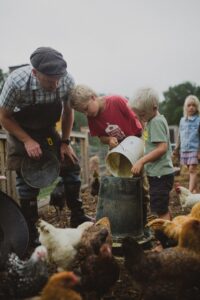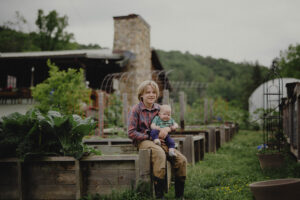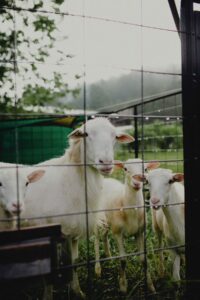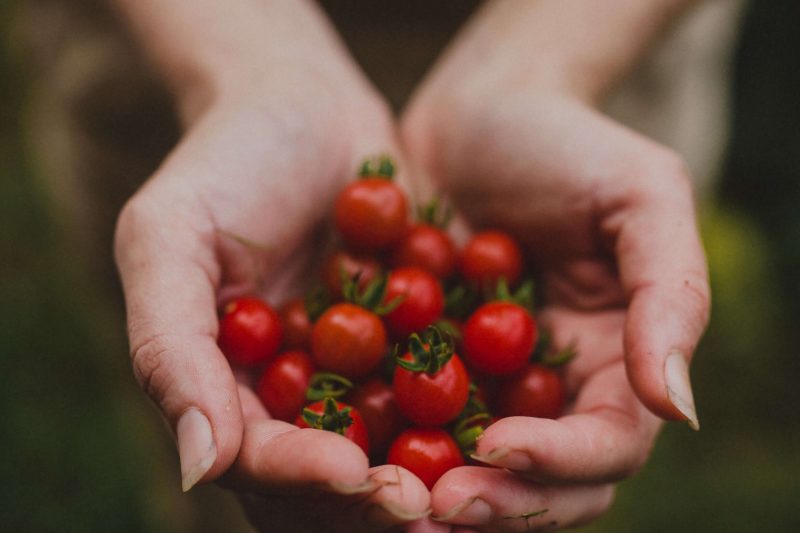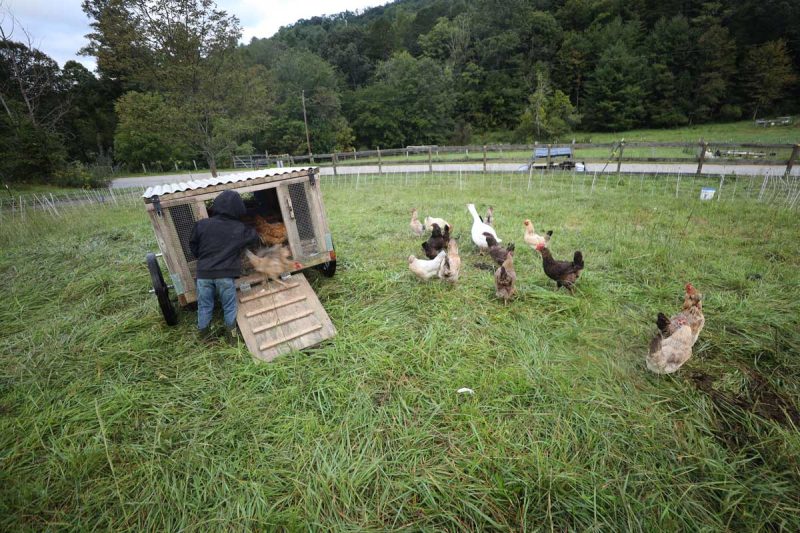This post does contain video footage of live birth. If you wish not to see that check out these other posts on the BLOG.
Why We Choose to Allow Our Cows to Give Birth Naturally
Our goal here on the farm is to raise hearty stock that will last through generations to our grandchildren. Cows don’t normally need assistance giving birth, but when they do, it indicates poor genetics. Be sure to check out this post on newborn calf care to know what to look for in the first hours and days of your new calf’s life.
It has taken us six years to capture our cows giving birth on video because most of our cows have given birth at night, and we wake up having missed the excitement. Sourcing cows with good genetics plays an important role in healthy stock but doesn’t end there.
Cows will thrive in a low-stress, natural environment. For this reason, we milk our cows in the field, provide adequate pasture for grazing, and mineral supplementation to support proper development.
In addition to growing and developing in a natural environment, cows also need to begin life naturally. We choose not to intervene and allow our cows to give birth naturally for the following reasons:
- Proper Development – It may seem alarming, but cows will typically push for an average of two hours before the calf is entirely out. This time is essential as the calf requires this squeeze for proper development when entering its new environment.
- Safety of the Calf – When intervening, you may inadvertently pinch the umbilical cord, cutting off the calf’s blood supply and killing it before it’s born.
- Momma’s Safety – Assisting a birth by pulling on the calf can tear the momma cow. Pulling on the calf could also cause uterine prolapse.
- Your Safety – Cows do not like handling, and your presence can cause a delay due to the cow’s stress. Cows are powerful animals and can cause severe injury to well-intending owners attempting to help.
- No Turning Back – Once you begin to intervene or assist with a calf’s birth, you can’t change your mind. Intervention requires that you finish the job.
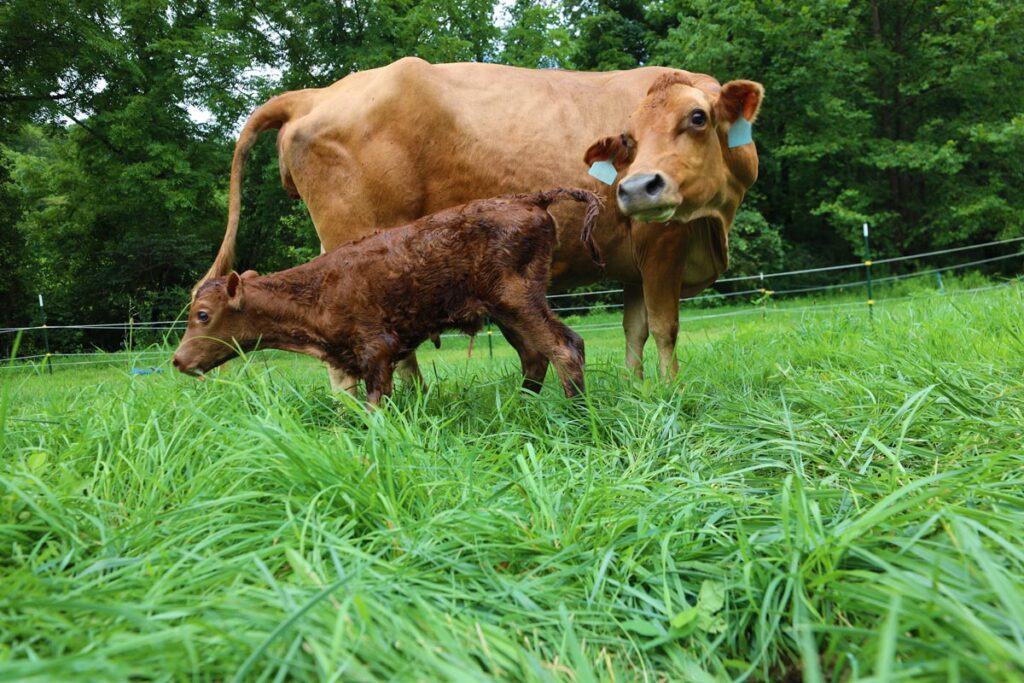
Preparing for a Calf
A cow is pregnant for approximately 283 days (nine months and ten days). Knowing approximately when your cow is due will help you understand when to watch for signs of imminent calving.
Before labor begins, a cow will start to show signs. Some cows will show all the signs of birthing, whereas others will show few. The following are some of the typical signs:
- Swelling of the udder
- Teats will start to drip milk
- Mucus discharge from the vulva
- Restlessness
You should keep an eye on the momma cow because some complications can happen during the calving process, but being prepared can eliminate most of these concerns. You will find conflicting advice when using “Mr. Google Pants” to help prepare.
Finding a seasoned mentor can be invaluable in avoiding this type of confusion. My mentor also happens to be the breeder where I sourced my cows, so he has specific experience with my breed of cow.
Much of our information is also sourced from the book Keeping a Family Cow by Joann S. Graham. We use this book as a guide for raising and birthing our cows.
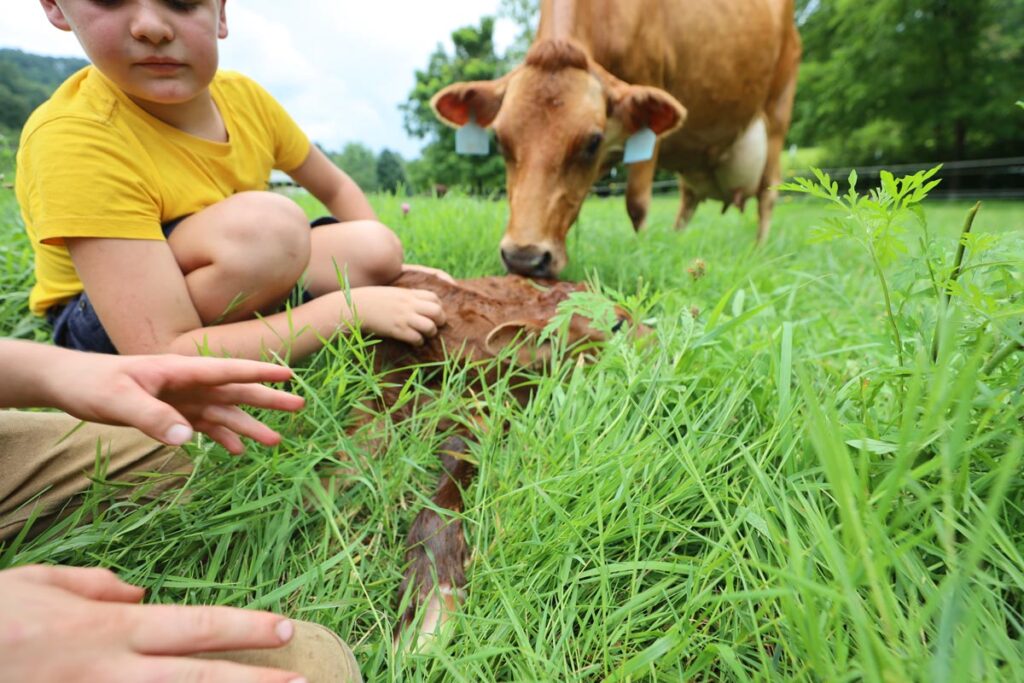
Complication During Calving
You can do everything right, and bad things can still happen on a farm. It is not fun when complications occur while birthing calves, but they do. Some difficulties include stillbirths, abnormal calf presentation, or the cow not progressing correctly during the process.
As natural farmers, we try our best not to intervene in the birthing process, but sometimes one needs to intervene by calling your vet or helping pull the calf.
Presentation of the Calf
When your cow is giving birth, a calf should be in what is called the normal position. The typical presentation of a calf is front hoofs are out front with the calf’s head laying on top. The hoofs come out first, then the nose of the calf.
If an abnormal presentation occurs, choosing to contact your vet or attempt to intervene is a choice you will need to make for yourself. Either way, you must be confident in your choice so that you can look back without regrets, no matter the outcome.
A Cow Giving Birth Step-by-Step
- Preparation Stage – During this stage, the calf moves into the birth canal, and the cervix begins to dilate. Dilation is when contractions start. The preparation stage can last 2 to 12 hours. Signs that your cow is at the beginning of labor include losing appetite, self-isolation from the herd, lifting its tail and increased restlessness. This stage will be complete when the cervix is fully dilated.
- Delivery of Calf – Your cow will start to push as her calf (and its water sac) pass through the birth canal. This process will only take 1 to 2 hours. As long as your cow is progressing through this phase and your calf is positioned right, there should be no complications. Momma has to let nature (contractions) do the work. Cows can give birth while standing or lying down. Once the calf is born, the momma will lick it to increase blood circulation and trigger the calf to stand and nurse. The calf might lay on the ground for a few minutes, which is perfectly normal. It may need time to catch its breath after coming into the world. A calf should be able to stand and nurse within an hour or two of being born.
- Delivery of Placenta (Cleaning Stage) – Once the calf is born, the momma cow must deliver the placenta, which can take 8 to 12 hours. This is the cleaning stage because the cow’s body cleans the uterine walls. The birthing process is complete once the placenta is delivered.
- New Life on the Farm – Now that the new addition to the farm is here, you want to ensure that momma and newborn are safe and healthy. Check out these posts for everything you need to know for your new calf’s first few hours and days of life and the calf sharing method. If your cow has had complicated labor, you need to help the calf, but most mommas will lick their new calf and get it standing up. Because calves are born with weak immune systems, you will want to ensure the newborn calf is nursing and getting colostrum immediately. Colostrum is full of nutrients, vitamins, and minerals that boost your calf’s immune system. Continue to provide momma cow with quality feed and minerals for good milk production. Keep a watchful eye to make sure momma is not rejecting her calf, and check momma periodically to ensure mastitis is not setting in.

Congratulations on the new addition to your homestead!



